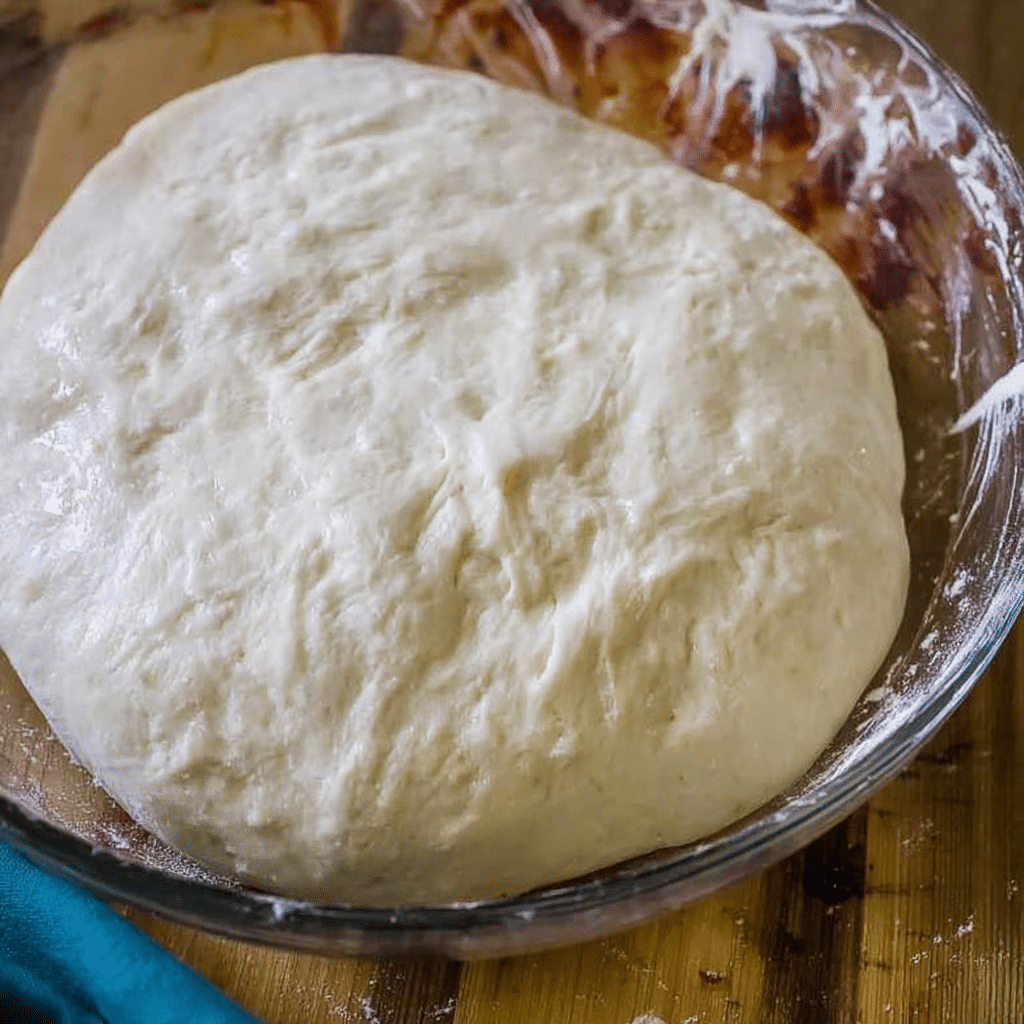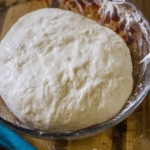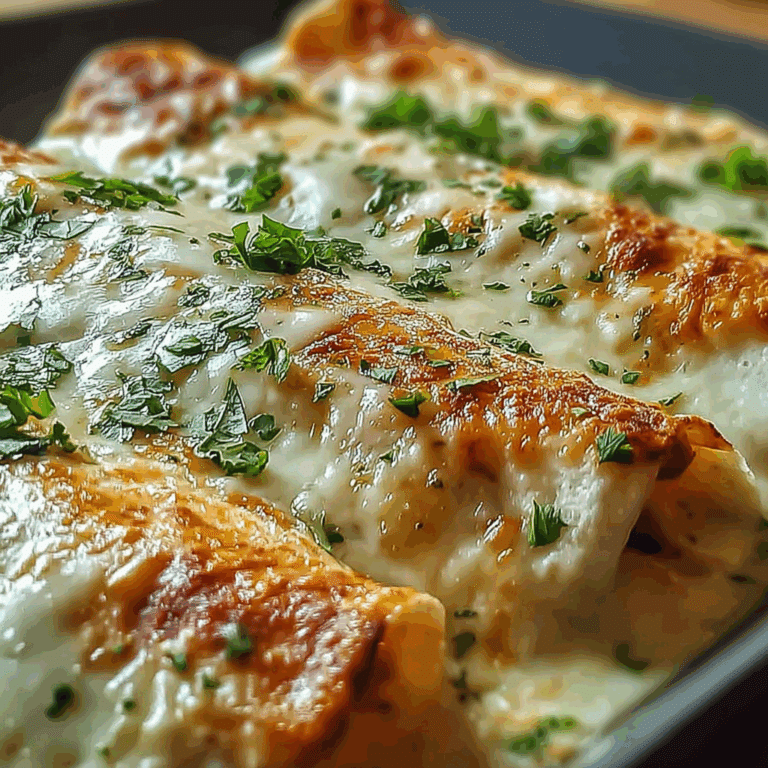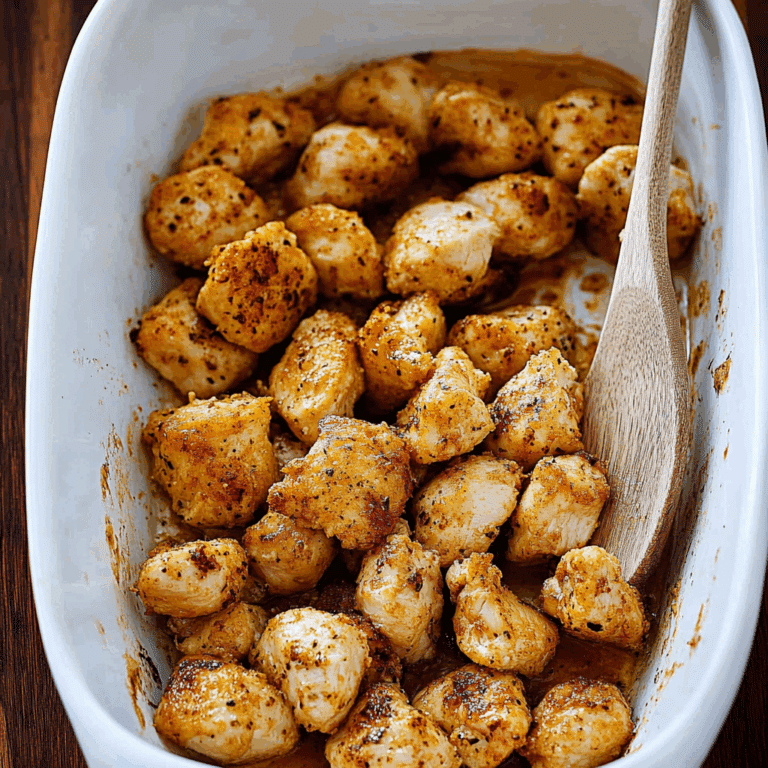Easy Steps to Perfect Homemade Pizza Dough

Master the art of Homemade Pizza Dough with this simple, step-by-step guide for soft, chewy, and delicious pizza every time. Whether you are a beginner or a seasoned home cook, making your own dough is a rewarding experience that guarantees fresh, flavorful, and perfectly textured pizza crusts. This recipe demystifies the process, using basic ingredients that come together to create a dough you’ll want to make again and again.
Why You’ll Love This Recipe
- Effortless Preparation: The straightforward steps make it easy for anyone to follow, even without prior baking experience.
- Freshness Guaranteed: Making your own dough means no preservatives and complete control over ingredients.
- Perfect Texture: Achieve that ideal balance between soft and chewy with consistent results every time.
- Customizable Flavor: From spices to hydration levels, you can tweak it to suit your personal tastes.
- Cost-Effective: You save money by making dough at home versus buying pre-made or takeout pizza.
Ingredients You’ll Need
These ingredients are simple staples you likely already have in your kitchen. Each plays a crucial role in shaping the texture, flavor, and color of your perfect Homemade Pizza Dough.
- All-Purpose Flour: Provides structure and chewiness to the dough.
- Warm Water: Activates the yeast and hydrates the flour for gluten development.
- Active Dry Yeast: Creates the air bubbles that make the dough rise and create a light texture.
- Olive Oil: Adds richness and helps keep the dough soft.
- Sugar: Feeds the yeast for a better rise and adds a hint of sweetness.
- Salt: Enhances flavor and strengthens the gluten network.
Variations for Homemade Pizza Dough
Feel free to experiment with these variations to match your dietary needs or to add a creative twist to your dough. Making it your own is part of the fun!
- Whole Wheat Dough: Substitute half the flour with whole wheat for a nuttier flavor and more fiber.
- Herbed Dough: Add dried oregano, basil, or garlic powder to the dough for an aromatic boost.
- Gluten-Free Option: Use gluten-free flour blends tailored for bread making.
- Thin Crust Variation: Reduce the hydration slightly and roll the dough thinner for a crispier crust.
- Sourdough Starter: Replace yeast with a sourdough starter for tangy depth and natural leavening.

How to Make Homemade Pizza Dough
Step 1: Proof the Yeast
Start by dissolving the sugar in warm water (about 105-110°F), then sprinkle the active dry yeast on top. Let it sit for 5 to 10 minutes until it becomes frothy, signaling the yeast is alive and ready to work its magic.
Step 2: Mix the Ingredients
In a large bowl, combine the flour and salt. Pour in the yeast mixture along with olive oil. Stir gently with a wooden spoon or dough hook until the ingredients start to come together, forming a shaggy dough.
Step 3: Knead the Dough
Transfer the mixture onto a floured surface and knead for 8 to 10 minutes by hand until the dough is smooth, elastic, and slightly tacky to touch. Alternatively, use a mixer fitted with a dough hook on medium speed for 6 to 7 minutes.
Step 4: First Rise
Place the dough in a lightly oiled bowl, turning so it’s coated in oil. Cover with a clean kitchen towel or plastic wrap and let it rise in a warm spot for about 1 to 1.5 hours, or until doubled in size.
Step 5: Shape the Dough
Punch down the risen dough to release gas, then divide into portions depending on your pizza size. Shape each ball by folding the edges under to create surface tension—a step that helps with rising and crust formation.
Step 6: Second Rise (Optional)
If you have time, let the dough balls rest for 30 minutes to an hour under a towel to relax the gluten, making them easier to stretch and shaping a softer crust.
Step 7: Stretch and Bake
Gently stretch or roll the dough to your preferred size and thickness. Add your favorite toppings and bake in a preheated oven (ideally around 475°F) on a pizza stone or baking tray for 10 to 15 minutes until golden and bubbly.
Pro Tips for Making Homemade Pizza Dough
- Temperature Matters: Keep your water warm but not hot to avoid killing the yeast.
- Flour Variety: Experiment with bread flour for extra chewiness due to higher protein content.
- Patience Pays: Allowing adequate rising and resting times improves the dough’s flavor and texture.
- Don’t Over-Flour: Use just enough flour to prevent sticking to keep the dough tender.
- Use a Pizza Stone: It mimics professional ovens by evenly distributing heat for a crisp crust.
How to Serve Homemade Pizza Dough
Garnishes
Classic fresh basil leaves, a drizzle of extra virgin olive oil, or a sprinkle of parmesan cheese add that perfect finishing touch to your pizza, enhancing aroma and flavor.
Side Dishes
Serve alongside a fresh green salad, garlic knots, or roasted vegetables to complement the dough’s warm and comforting taste perfectly.
Creative Ways to Present
Turn your pizza dough into calzones, strombolis, or flatbreads topped with gourmet ingredients for an exciting twist that will impress family and friends alike.
Make Ahead and Storage
Storing Leftovers
Wrap leftover dough tightly in plastic wrap and keep it in the refrigerator for up to three days, allowing you to conveniently make another pizza without the prep time.
Freezing
Portion dough balls and freeze them in airtight bags for up to three months. Thaw overnight in the fridge before bringing to room temperature prior to shaping.
Reheating
Reheat leftover baked pizza in a skillet over medium heat or in the oven at 375°F to revive the crust’s crispiness and maintain toppings’ texture.
FAQs
Can I use instant yeast instead of active dry yeast?
Yes, you can substitute instant yeast but reduce the amount slightly and mix it directly with the flour, skipping the proofing step.
How long can I let the dough rise?
Dough can rise anywhere from 1 hour to overnight in the fridge; slower fermentation improves flavor but requires longer planning.
What if my dough is too sticky?
Sprinkle a little more flour as you knead, but avoid over-flouring, which can toughen the dough.
Can I make the dough without a mixer?
Absolutely! Kneading by hand is traditional and gives a great feel for dough readiness; it just takes a bit more elbow grease.
How thin can I stretch the dough without tearing?
With proper resting, stretch the dough until it’s about 1/8 inch thick, but be gentle to avoid holes; practice makes perfect.
Final Thoughts
Making your own Homemade Pizza Dough is one of those kitchen joys that combines simplicity with creativity, offering a delicious payoff every time. With just a few pantry essentials and this easy-to-follow guide, you’ll be crafting pizzeria-quality crusts that invite endless topping possibilities. Don’t wait—grab your ingredients and start stretching your dough today for pizza nights that everyone will rave about!
Related Posts
- Easy Monterey Chicken Spaghetti Bake Recipe
- Easy Chicken Pasta Recipes to Try Tonight
- Best Pizza Burgers to Satisfy Your Cravings

Homemade Pizza Dough
- Prep Time: 15 minutes
- Cook Time: 10-15 minutes
- Total Time: 1 hour 45 minutes to 2 hours
- Yield: 2 medium pizzas (about 12 inches each) 1x
- Category: Appetizers
- Method: Baking
- Cuisine: Italian
- Diet: Customizable (regular or gluten-free)
Description
Master the art of homemade pizza dough with this simple, step-by-step recipe that yields soft, chewy, and delicious pizza crusts every time. Perfect for beginners and seasoned cooks alike, this recipe uses basic pantry staples to create fresh, flavorful dough that can be customized to your taste and dietary needs.
Ingredients
Basic Ingredients
- 3 ½ cups (440g) all-purpose flour
- 1 ¼ cups (300ml) warm water (105-110°F)
- 2 ¼ tsp (1 packet) active dry yeast
- 2 tbsp olive oil
- 1 tbsp sugar
- 2 tsp salt
Optional Variations
- Substitute half the all-purpose flour with whole wheat flour for whole wheat dough
- Add 1 tsp dried oregano, basil, or garlic powder for herbed dough
- Use gluten-free flour blend tailored for bread making for gluten-free option
- Reduce water slightly (about 10-15%) for a thinner, crispier crust
- Replace yeast with sourdough starter for natural leavening and tangy flavor
Instructions
- Proof the Yeast: Dissolve the sugar in warm water (105-110°F). Sprinkle the active dry yeast on top and let sit for 5 to 10 minutes until frothy, indicating the yeast is active.
- Mix the Ingredients: In a large bowl, combine the flour and salt. Pour in the yeast mixture and olive oil. Stir gently with a wooden spoon or dough hook until a shaggy dough forms.
- Knead the Dough: Transfer the dough to a floured surface and knead by hand for 8 to 10 minutes until smooth, elastic, and slightly tacky. Alternatively, use a mixer with a dough hook on medium speed for 6 to 7 minutes.
- First Rise: Place the dough in a lightly oiled bowl, turning to coat with oil. Cover with a towel or plastic wrap and let rise in a warm spot for 1 to 1.5 hours, or until doubled in size.
- Shape the Dough: Punch down the dough to release gas. Divide into portions depending on pizza size. Shape each into a ball by folding edges under to create surface tension, aiding rising and crust texture.
- Second Rise (Optional): Let dough balls rest for 30 minutes to 1 hour under a towel to relax gluten, making stretching easier and crust softer.
- Stretch and Bake: Gently stretch or roll dough to desired size and thickness. Add toppings of choice. Bake in preheated oven at 475°F on a pizza stone or baking tray for 10 to 15 minutes until crust is golden and bubbly.
Notes
- Keep water warm but not hot to avoid killing the yeast.
- Experiment with bread flour for extra chewiness due to higher protein content.
- Allow adequate rising and resting times for improved flavor and texture.
- Use just enough flour to prevent sticking without toughening the dough.
- Use a pizza stone for even heat distribution and a crisp crust.
Nutrition
- Serving Size: 1/4 of dough (approximately 140g)
- Calories: 280
- Sugar: 1.5g
- Sodium: 400mg
- Fat: 5g
- Saturated Fat: 0.7g
- Unsaturated Fat: 3.5g
- Trans Fat: 0g
- Carbohydrates: 52g
- Fiber: 2g
- Protein: 8g
- Cholesterol: 0mg
Keywords: homemade pizza dough, pizza crust, soft pizza dough, chewy pizza dough, easy pizza dough, homemade pizza, basic pizza dough, DIY pizza crust






